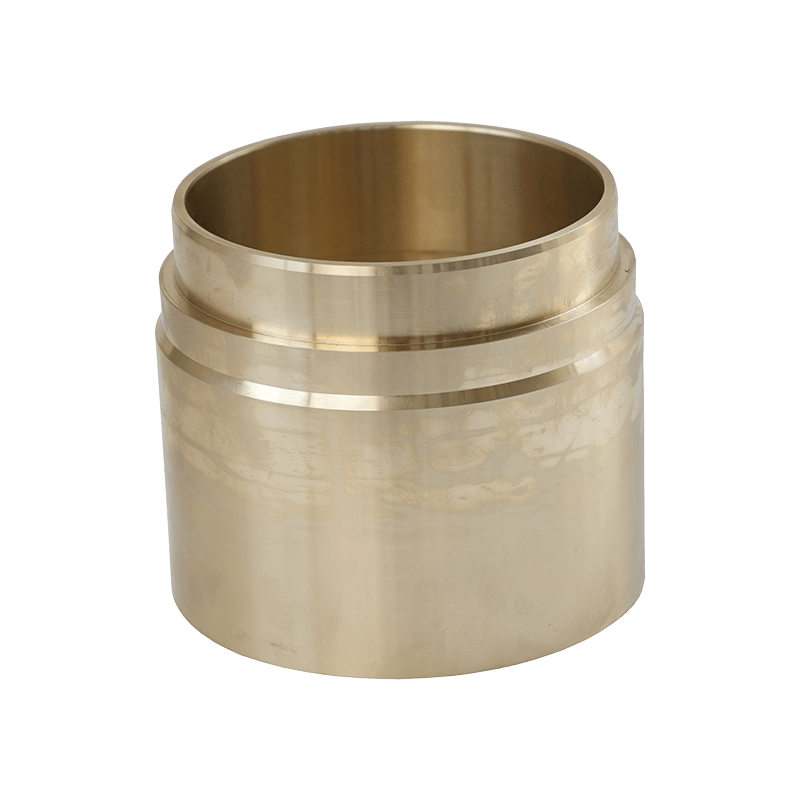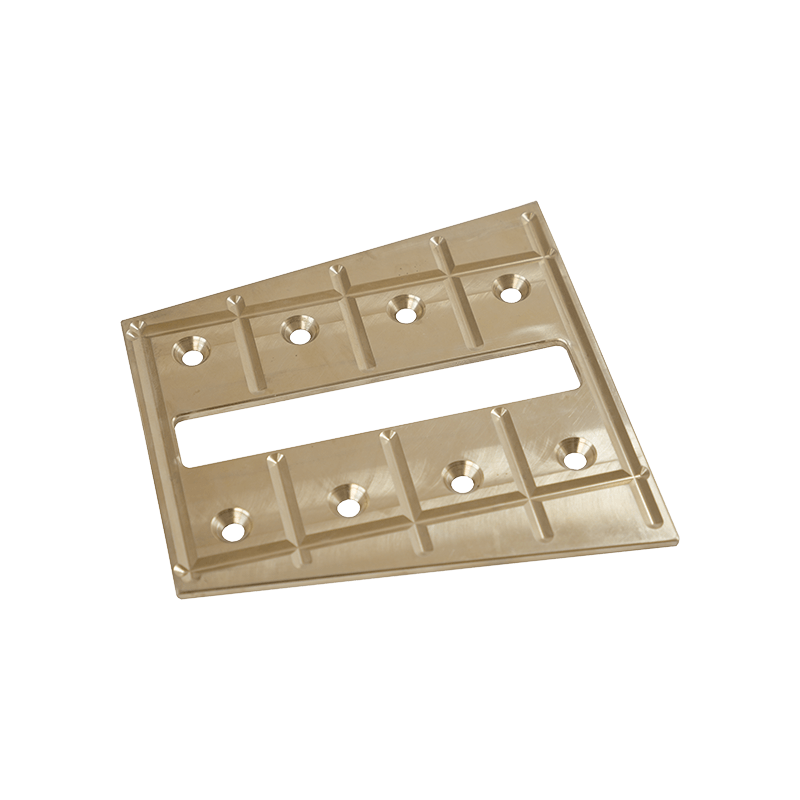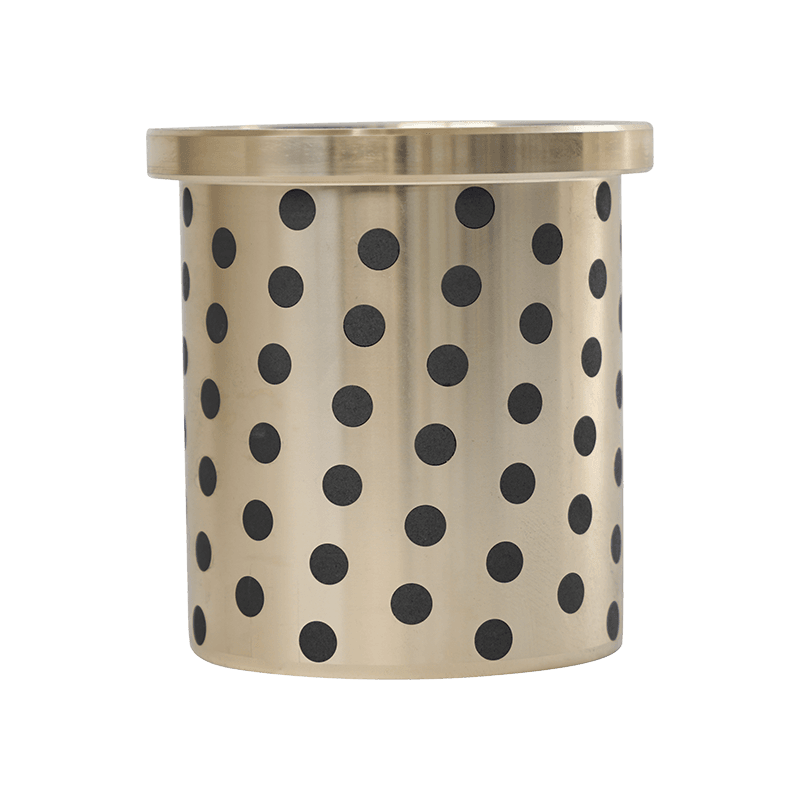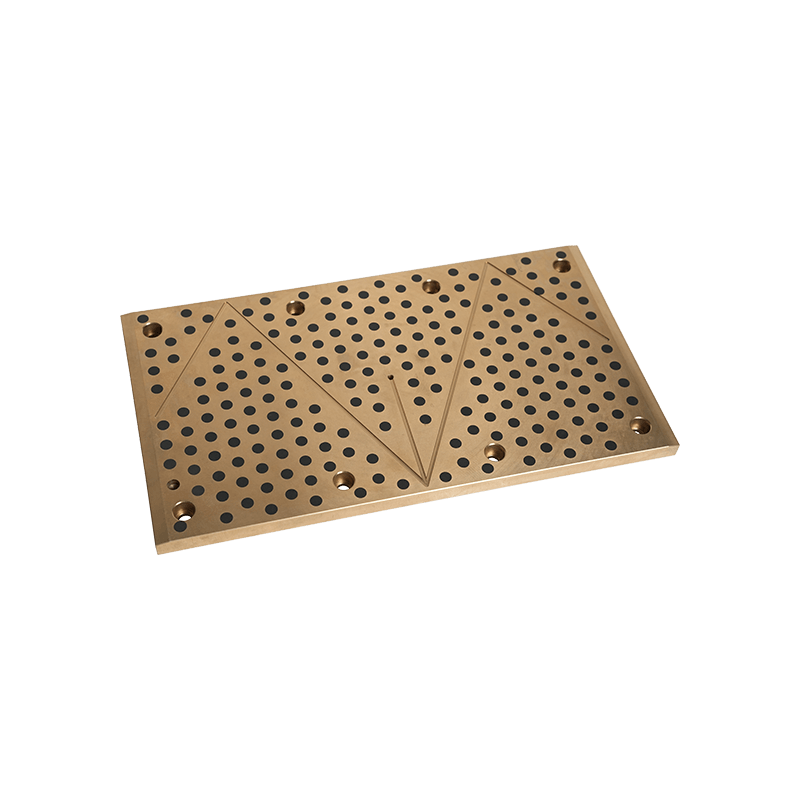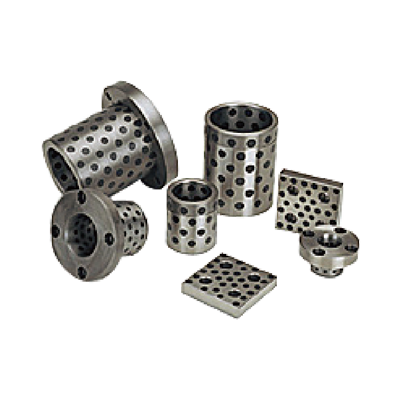1. Introduction
In industrial machinery, especially in conveyor systems, material handling equipment, and bulk transport systems, bearings play a critical role in ensuring smooth and efficient operation. Among the many types of bearings used in such environments, the Self-Lubricating Scraper Bearing stands out due to its unique design, low maintenance requirements, and exceptional performance in harsh operating conditions.
A self-lubricating scraper bearing is a specialized type of plain bearing designed to support scraper chains or blades that move along a trough or conveyor bed, typically used in systems like scraper conveyors, drag conveyors, and sludge removal units. Unlike traditional rolling-element bearings that require regular external lubrication, self-lubricating scraper bearings are engineered to provide continuous lubrication internally, eliminating the need for frequent oiling or greasing.
This comprehensive introduction explores the structure, working principle, materials, advantages, applications, installation, maintenance, and future trends of self-lubricating scraper bearings, providing a detailed understanding of their importance in modern industrial operations.
2. What Is a Self-Lubricating Scraper Bearing?
A self-lubricating scraper bearing is a maintenance-free plain bearing used to support the shaft or pivot point of scraper blades in conveyor systems. It is typically mounted on the side plates of a conveyor trough and allows the scraper chain to glide smoothly while maintaining alignment and reducing friction.
The term "self-lubricating" refers to the bearing’s ability to release lubricant gradually over time through its material composition or embedded lubricants, ensuring consistent performance without external grease or oil input. This makes it ideal for environments where access for maintenance is limited, or where contamination from external lubricants must be avoided.
3. Structure and Design
The basic structure of a self-lubricating scraper bearing includes:
Outer Housing: Usually made of durable materials like cast iron, steel, or high-strength engineering plastic. It provides structural support and protects the internal bearing element.
Inner Bushing or Sleeve: The core component made from self-lubricating material such as bronze, PTFE (polytetrafluoroethylene), graphite-impregnated composites, or polymer-based composites (e.g., POM, UHMW-PE).
Lubrication Reservoirs or Solid Lubricants: Tiny pores or channels within the bushing are pre-filled with solid lubricants like graphite or molybdenum disulfide (MoS₂), or the material itself (like PTFE) has low friction properties.
Seals or Dust Covers (optional): Some models include protective seals to prevent ingress of dirt, water, or abrasive particles, enhancing longevity.
The bearing is typically designed for radial load support, as scraper systems primarily generate lateral forces during operation.
4. Working Principle
The self-lubricating scraper bearing operates on the principle of boundary lubrication, where a thin film of lubricant is continuously released from the bearing material to the shaft surface during motion. As the scraper chain moves, the relative motion between the shaft and the bearing causes microscopic amounts of the embedded lubricant to transfer to the metal surface, forming a low-friction layer.
This process eliminates metal-to-metal contact, reduces wear, and prevents overheating. Because the lubricant is built into the material, it is released only when needed—during operation—ensuring efficient use and long service life.
Additionally, the bearing’s low coefficient of friction allows smooth movement of the scraper system with minimal energy loss, contributing to energy efficiency.
5. Materials Used
The performance of a self-lubricating scraper bearing heavily depends on the materials used in its construction:
Metal-Based Self-Lubricating Bearings:
Sintered Bronze with Graphite: Porous bronze is impregnated with graphite, which acts as a dry lubricant. Ideal for moderate loads and temperatures.
Steel Backed with PTFE Lining: A steel shell with a thin layer of PTFE provides high strength and ultra-low friction. Common in heavy-duty applications.
Polymer-Based Bearings:
PTFE (Teflon): Offers excellent chemical resistance and very low friction but lower load capacity.
POM (Polyoxymethylene/Acetal): High stiffness, low moisture absorption, and good wear resistance.
UHMW-PE (Ultra-High Molecular Weight Polyethylene): Extremely abrasion-resistant and suitable for wet or dirty environments.
Composite Materials:
Hybrid materials combining fibers (glass, carbon) with resin matrices and solid lubricants offer balanced strength, wear resistance, and self-lubrication.
The choice of material depends on the operating environment, including load, speed, temperature, and exposure to moisture or chemicals.
6. Key Advantages
Self-lubricating scraper bearings offer numerous benefits over traditional lubricated bearings:
Maintenance-Free Operation: Eliminates the need for regular greasing, reducing labor costs and downtime.
Reliable Performance in Harsh Environments: Resistant to dust, moisture, and contamination—ideal for mining, wastewater treatment, and food processing.
Reduced Downtime: Fewer maintenance intervals mean higher equipment availability.
Clean Operation: No external grease means no oil leaks or product contamination—critical in food, pharmaceutical, and cleanroom applications.
Corrosion Resistance: Polymer and composite versions resist rust and chemical attack.
Noise Reduction: Smooth operation reduces vibration and noise levels.
Long Service Life: Properly selected bearings can last thousands of operating hours.
Energy Efficiency: Low friction reduces power consumption.
7. Common Applications
Self-lubricating scraper bearings are widely used in industries that rely on continuous, reliable material transport:
Wastewater Treatment Plants: Used in chain-driven scraper systems in sedimentation tanks and clarifiers where water, sludge, and corrosive gases are present.
Mining and Mineral Processing: In heavy-duty conveyor systems handling abrasive materials like coal, ore, and sand.
Food and Beverage Industry: Ideal for conveyors in bakeries, dairies, and packaging lines where hygiene and contamination control are essential.
Power Plants: In ash handling and coal feeding systems.
Agriculture: For manure scrapers in livestock barns and feed conveyors.
Cement and Building Materials: In dusty, high-wear environments.
Marine and Shipbuilding: Onboard sludge and bilge handling systems.
Their ability to perform in wet, dirty, and high-load conditions makes them indispensable in these sectors.
8. Installation Guidelines
Proper installation is crucial to ensure optimal performance and longevity:
Alignment: The bearing must be aligned correctly with the scraper shaft to avoid uneven wear.
Shaft Finish: The shaft should be smooth (typically ground or polished) to prevent premature wear of the bearing surface.
Clearance: Appropriate radial clearance must be maintained—too tight causes overheating; too loose leads to vibration.
Mounting: Secure the bearing firmly in the housing using bolts or press-fit methods, depending on the design.
Avoid Overloading: Ensure the system does not exceed the bearing’s load rating.
Check for Obstructions: Ensure no debris or misaligned components interfere with movement.
Following manufacturer specifications is essential for trouble-free operation.
9. Maintenance and Inspection
One of the biggest advantages of self-lubricating scraper bearings is their low maintenance requirement. However, periodic inspection is still recommended:
Visual Inspection: Check for signs of wear, cracking, or deformation.
Movement Test: Ensure the scraper moves smoothly without binding.
Replacement Schedule: Replace bearings based on operational hours or wear indicators, even if no immediate failure is evident.
Cleaning: In dirty environments, clean the surrounding area to prevent buildup that could affect performance.
Because there is no need for lubrication, maintenance is limited to inspection and replacement, significantly reducing operational costs.
10. Performance in Extreme Conditions
High Temperature: Some self-lubricating bearings (e.g., PTFE or graphite-based) can operate up to 250°C, while others may degrade above 100°C. Selection must match the thermal environment.
Low Temperature: Polymer-based bearings remain functional in sub-zero conditions without becoming brittle.
Wet or Submerged Environments: Unlike metal bearings that rust, plastic and composite versions perform excellently in water or chemical exposure.
Abrasive Conditions: UHMW-PE and sintered bronze bearings resist wear from sand, grit, and other particulates.
11. Comparison with Traditional Bearings
| FEATURE | SELF-LUBRICATING BEARING | TRADITIONAL ROLLING BEARING |
| Lubrication | Built-in, no external input | Requires regular greasing |
| Maintenance | Minimal | High |
| Contamination Risk | Low (no grease leakage) | High (grease attracts dirt) |
| Lifespan | Long (in suitable conditions) | Varies; shorter if poorly maintained |
| Cost | Higher initial cost, lower lifetime cost | Lower initial cost, higher maintenance cost |
| Environment Suitability | Excellent in dirty, wet, or hygienic environments | Limited without seals and frequent service |
12. Challenges and Limitations
Despite their advantages, self-lubricating scraper bearings have some limitations:
Load and Speed Limits: Not suitable for very high-speed or extremely high-load applications without proper design.
Heat Dissipation: Less efficient than metal bearings, so overheating can occur under excessive loads.
Initial Cost: Higher upfront cost compared to standard bushings.
Material Degradation: Some polymers may degrade under UV exposure or certain chemicals.
Proper selection and system design are essential to overcome these challenges.
13. Innovations and Future Trends
The future of self-lubricating scraper bearings is moving toward:
Smart Bearings: Integration of sensors to monitor wear, temperature, and load in real time.
Advanced Composites: Development of hybrid materials with enhanced strength and lubrication.
3D Printing: Custom-shaped bearings for unique applications.
Sustainability: Use of recyclable and bio-based materials to reduce environmental impact.
Nano-Lubricants: Incorporation of nano-additives to further reduce friction and extend life.
These innovations will expand the applications and efficiency of self-lubricating bearings in Industry 4.0 and smart manufacturing environments.
Self-lubricating scraper bearings are a vital component in modern industrial conveyor and material handling systems. Their ability to operate reliably without external lubrication, combined with durability, corrosion resistance, and low maintenance, makes them a preferred choice in demanding environments such as wastewater treatment, mining, food processing, and agriculture.
By reducing downtime, lowering maintenance costs, and improving operational efficiency, these bearings contribute significantly to the overall performance and sustainability of industrial machinery. As material science and manufacturing technologies continue to advance, self-lubricating scraper bearings will become even more efficient, intelligent, and adaptable to the evolving needs of global industries.
The self-lubricating scraper bearing is not just a mechanical component—it is a smart, sustainable solution that supports the future of reliable and efficient industrial automation.


 English
English Deutsch
Deutsch Español
Español русский
русский

 +0086-513-88690066
+0086-513-88690066